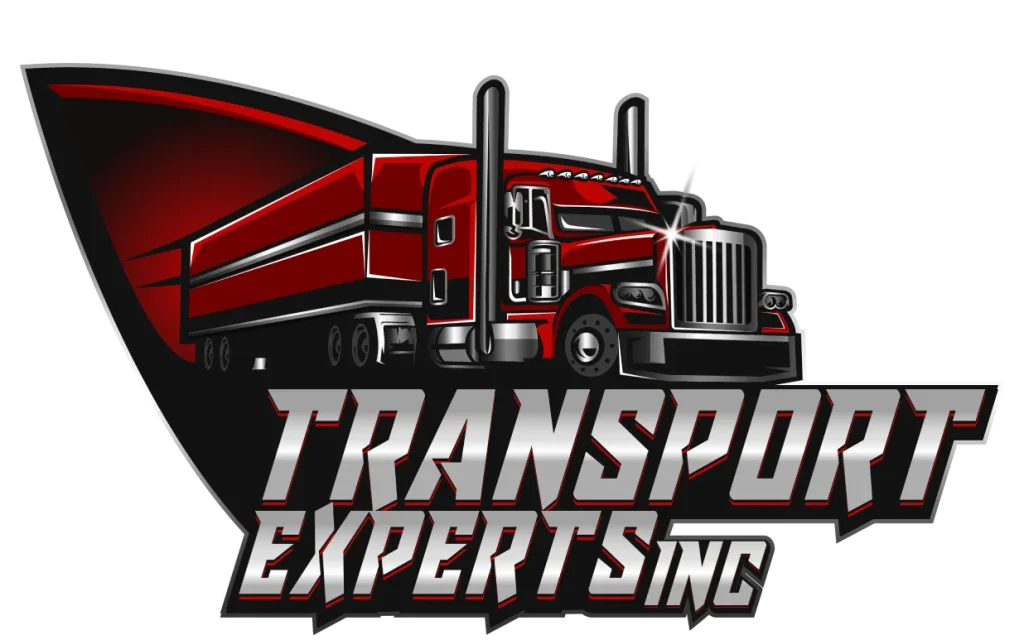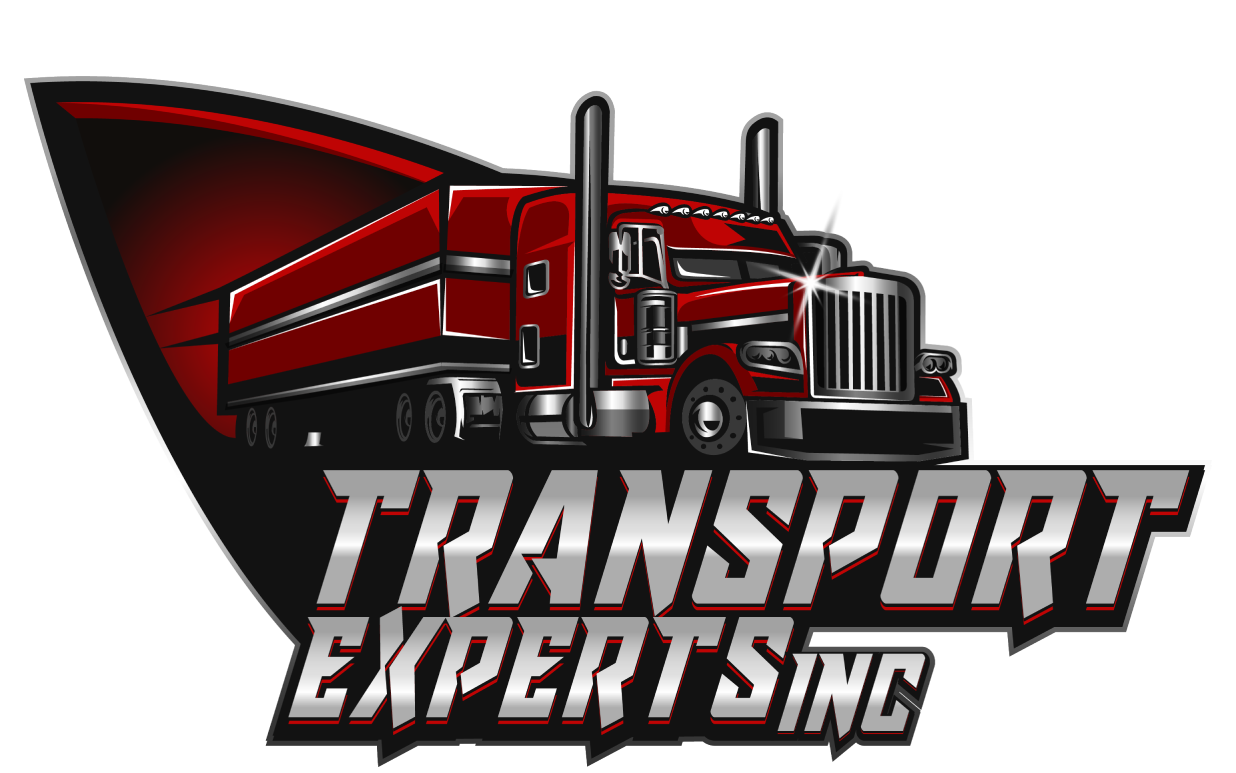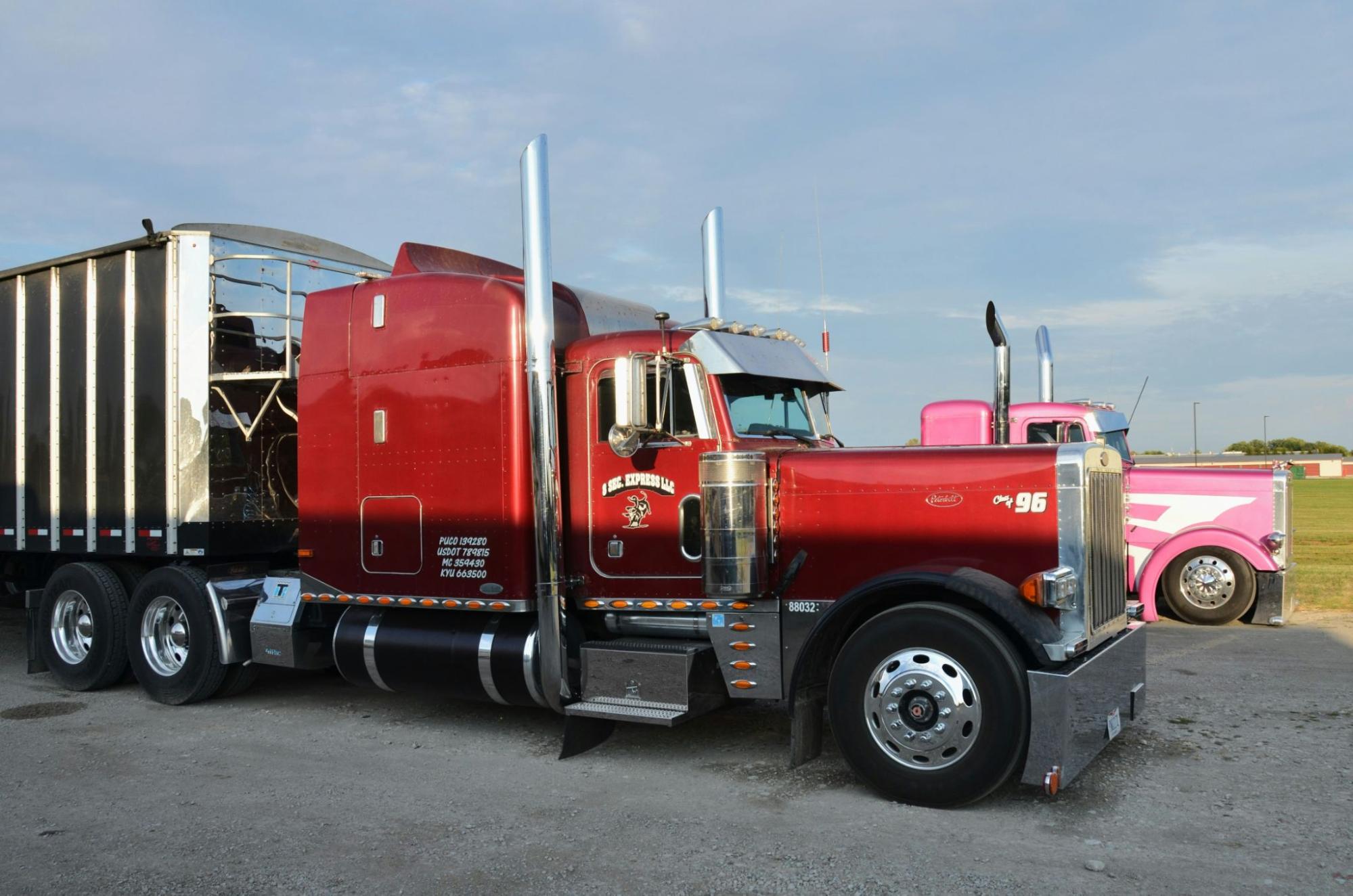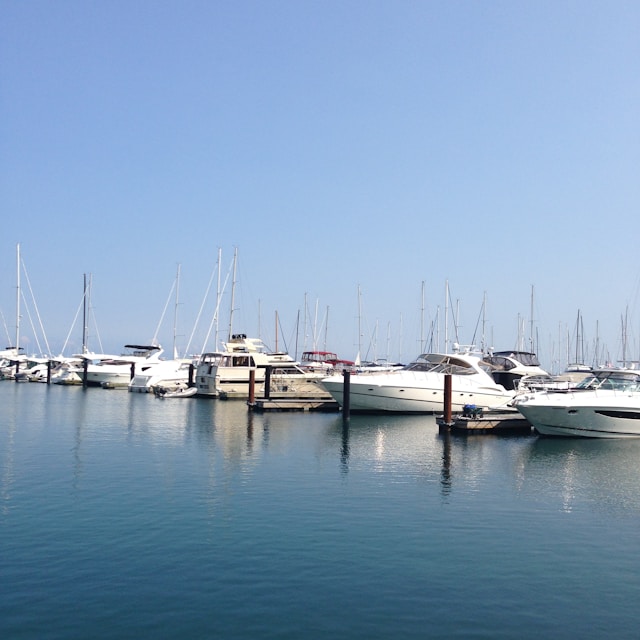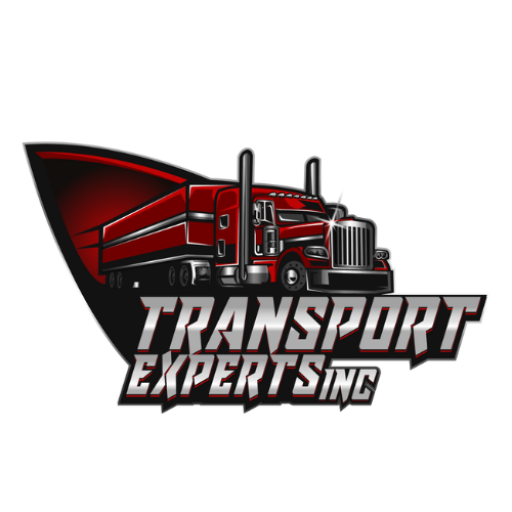The right trailer in the fast-paced freight transportation industry can be the difference between a late, expensive delivery and a shipment that was delivered safely, efficiently, and on time. Pressure is mounting on businesses to transport cargo across states, regions and even borders without wasting time or money.
Construction sites that require heavy machinery, farms that require heavy vehicles to transport their equipment, and manufacturers who need to transport heavy industrial parts all depend on the selection of the trailer as the means to determine their productivity and profits. That is where the open deck trailer takes shape as one of the most flexible and reliable choices in the trucking industry.
But what is an open deck trailer, and why has it become one of the most popular options for logistics professionals? Open deck trailers are flexible than enclosed trailers, which have limitations on the size and shape of items that can be transported. Their flat and open design enables carriers to transport all sizes of excavators to steel beams, wind turbine parts, and even farm tractors- all of which could never fit into a regular trailer.
This versatility makes open deck trailers necessary in those industries that transport freight that is too tall, wide, or heavy to use the standard solutions.
In this comprehensive guide, we’ll take a deep dive into everything you need to know about open deck trailers. We’ll answer questions like what an open deck trailer is, explore their unique features, explain the types of cargo best suited for them, and even compare them with step deck trailers to highlight the key differences.
By the end, you’ll have a complete understanding of how open deck trailers work, when to use them, and why they continue to play such a critical role in modern freight transport.
What is an Open Deck Trailer? Key Features and Design Explained
In terms of freight transportation, there is one type of trailer that has the capability of transporting the largest, heaviest, and most unusual freight- the open deck trailer. In contrast to an enclosed trailer, which limits the size, shape, and the manner of loading freight, the open deck, the open deck is an empty, flat platform and provides the shipper with the opportunity to move freight that would not be possible to transport otherwise. It may be tall construction machinery, steel beams spanning the full length of a structure, or equipment that refuses to squeeze through the doors of a box trailer. The open deck trailer is handy and reliable.
So, exactly what is an open deck trailer, and why is it so widely used across industries like construction, agriculture, and manufacturing? To answer this, let’s take a detailed look at its design, features, and functionality.
The Fundamental Design of an Open Deck Trailer
An open deck or a flatbed trailer is a construction that is based on a single, though very powerful idea: maximum flexibility of cargo. The open deck style eliminates walls and ceilings, allowing it to remain unrestrained, simply a good platform with axles and wheels to support it.
Deck Dimensions: Decks have a usual length of between 48 and 53 feet, and a width of approximately 8.5 feet. This provides sufficient space for bulky and larger products.
Material Strength: Open deck trailers are constructed out of high-grade steel to be durable, or aluminum, where weight is of the utmost importance. Steel trailers have the benefit of being strong enough to carry extremely heavy loads, whereas aluminum trailers are more fuel-efficient by virtue of carrying less weight in general.
Weight Capacity: Open deck trailers are usually loaded with a weight ranging between 40 and 48 thousand pounds, depending on the design and the number of axles. This can be surpassed by special, heavy-duty trailers, which are necessary when transporting large industrial machinery or construction materials.
The outcome is a platform that strikes a balance of power, stability, and flexibility, allowing freight companies to transport cargo that cannot be packed into a box.
Accessibility and Loading Advantages
One of the greatest strengths of an open deck trailer is its unrestricted accessibility. Since there are no walls or ceilings, cargo can be loaded from the sides, rear, or even from above with cranes.
- Forklift Access: Forklifts can approach from either side, speeding up the loading of pallets, beams, and pipes.
- Cranes and Hoists: For extremely large or heavy loads, cranes can lower cargo directly onto the deck from above.
- Drive-On Loading (for some models): Certain variations, like removable Gooseneck Trailers (RGNs), allow vehicles or equipment such as bulldozers, tractors, or harvesters to be driven directly onto the trailer.
This flexibility reduces loading and unloading times, increases efficiency, and lowers labor costs. For businesses operating on tight deadlines, this accessibility is a critical advantage.
Cargo Securement Systems
Because there’s no enclosure, measurement is a central design element in every open deck trailer. These trailers are equipped with multiple systems to ensure safety on the road:
- Stake Pockets and D-Rings: These allow chains and straps to be anchored securely to keep cargo in place.
- Chain Binders and Ratchet Straps: Used to tightly secure machinery and industrial equipment.
- Tarpaulin Systems: While open deck trailers expose freight to the elements, tarps can cover and protect goods from rain, dust, and wind. Specialized tarps such as lumber tarps, steel tarps, and machinery tarps are used depending on the type of freight.
- Edge Protectors and Padding: Prevent straps from damaging delicate surfaces or cutting into cargo.
Safety regulations in the U.S. (FMCSA) and internationally require that freight be tied down according to strict standards. This makes the securement systems on open deck trailers not just convenient, but essential for legal compliance and safety.
Specialized Variations of Open Deck Trailers
Although the term open deck trailer is commonly used to describe a broad group of flatbeds, there do exist a number of specialized forms that can be used to accommodate even more complicated and oversized freight needs. All variations are aimed at a different goal; all of them provide solutions, depending on industries and types of cargo.
Standard Flatbed Trailer

The most general kind of open deck trailer in freight transportation is the standard flatbed trailer. It has a length of 48 to 53 feet and a width of about 8.5 feet, which offers a solid and level surface to transport a variety of items. These types of trailers come in high demand to transport general freight like pallets, lumber, and steel pipes. Flatbed trailers can be regarded as the workhorse of open deck transportation due to their versatility and availability, and support industries in construction and manufacturing.
Step Deck Trailer (Drop Deck Trailer)
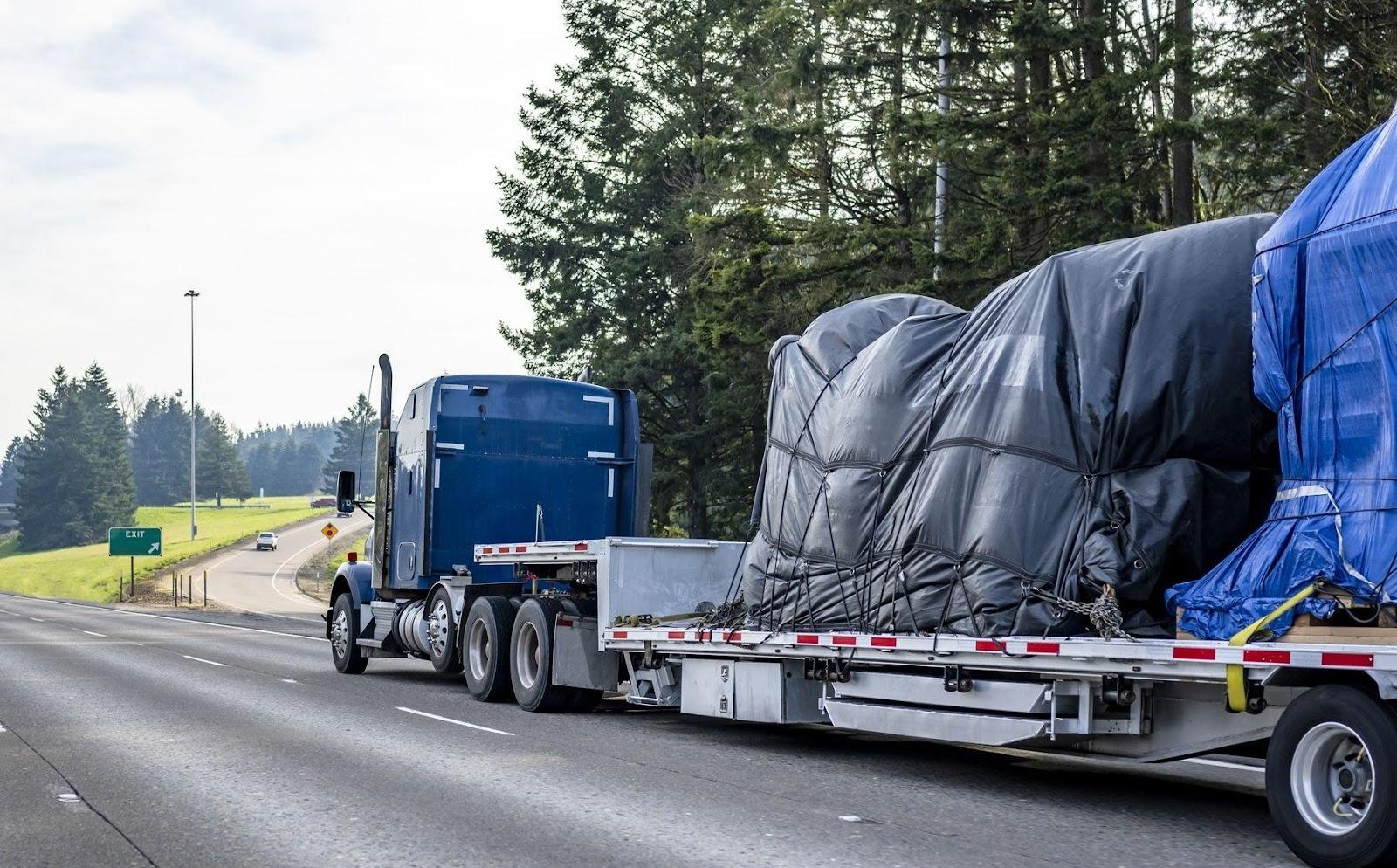
A drop deck trailer or step deck trailer is one where there is a lower deck placed behind the tractor. This special design enables it to load higher loads- usually 10 feet and above- without breaking the law on height. The normal step deck trailer dimensions are generally composed of an upper deck measuring approximately 11 feet in length, the bottom deck measuring between 37 and 43 feet, and a uniform width of 8.5 feet. Such trailers are especially handy when they are moving tall machinery or equipment that cannot fit on a standard flatbed. Step deck trailers transform flexibility with compliance and provide shippers with a sure way to handle oversized cargo.
Double Drop Trailer

The trailer is the double drop, which is specifically designed to carry extra-tall freight. As it falls on two occasions, once at the front and once at the back, it forms a deep well in the midpoint of the trailer. This depressed area offers extra height clearance and, therefore, double drop trailers are best suited for carrying industrial tanks, turbines, or very bulky machines. They are designed in such a way that shippers can transport large goods at legal and safe heights without jeopardising or breaching road clearance laws.
Extendable Flatbed Trailers

An extendable flatbed trailer is the right choice when the freight is too long for a normal open deck trailer. These trailers may be lengthened beyond the length of the original, to enable them to convey unusually long items like steel beams, oversized pipes and wind turbine blades. Their length also makes them flexible and, therefore, essential to any industry that handles unusually long cargo often.
Removable Gooseneck Trailers (RGNs).

A removable gooseneck trailer (RGN) is one of the most widely used types of open deck trailers. The characteristics that make it so unique are the fact that the front part is detachable, hence allowing the heavy equipment and vehicles to be driven directly onto the trailer. This renders RGNs perfect for the transportation of huge construction and agricultural machinery, as well as industrial trucks. RGNs are highly preferred in heavy-duty transport scenarios by eliminating the use of cranes or lifts in most instances, thus increasing efficiency and cutting down loading times.
Each variation expands the usability of the open deck trailer, making it an all-in-one solution for industries with unique freight needs.
Real-World Applications of Open Deck Trailers
The applications of open deck trailers in practice cut across almost all the industries that are engaged in the logistics operations on a large scale.
Construction Industry: This is used in carrying steel beams, prefabricated panels, heavy machinery and raw materials.
Agriculture: Transport of tractors, harvesters, plows and other massive farm machinery.
Manufacturing: Provides industrial machinery, molds and factory parts of oversize.
Energy Sector: Transport wind turbines, pipelines, transformers and drilling equipment.
Logistics & Distribution: It is used by the 3PL companies to provide flexible freight services in any industry.
In case of enclosed trailers’ failure, open deck trailers come to the rescue to see to it that the oversized freight arrives safely at its destination.
Why Open Deck Trailers Are Considered the Backbone of Heavy Hauling
The reason why Open Deck Trailers are believed to be the backbone of Heavy Hauling is because
Open deck trailers have become the backbone of heavy and oversized cargo transportation because of their simplicity in design, unparalleled versatility and universal use across the industry. They are unique from any other type of trailer since they can handle irregular, tall, wide, or long freight. The contemporary economy is reliant upon open deck trailers in the construction of skyscraper buildings, as well as the agriculture sector, which necessitates the transportation of equipment and materials to run the industries.
Prepared to carry oversized and bulk or non-standard freight confidently? Today, Contact Transport Experts Inc. will help you discover our selection of open deck trailers, including flatbeds, step deck trailers, and other specialty heavy haul trailers that bring you a new shipping solution tailored to your specific shipping requirements.
What Types of Cargo Are Best Suited for Open Deck Trailers?
Open deck trailers are tailored to the specific needs of cargo that needs spaciousness, easy accessibility and high support. Unlike enclosed trailers, which have a limited cargo capacity in terms of height, width and form, open deck trailers allow the handling of oversized and oddly shaped or extremely heavy products. They are versatile and hence cannot be replaced by industries that need the transportation of bulky, heavy or specialized products.
Heavy Machinery and Industrial Equipment
Heavy machinery and industrial equipment are one of the most widespread kinds of cargo delivered on open deck trailers. Excavators, bulldozers, forklifts, and industrial generators tend to be excessively large or excessively heavy to fit traditional enclosed trailers, and the flat open surface of an open deck trailer makes these machines easy to fit. The accessibility on all sides enables cranes, forklifts and other loading equipment to place these items safely so as to be transported safely over long distances.
Construction Materials
Open deck trailer transport is also of great help with construction materials. Steel beams, pipes, scaffolding, lumber and prefabricated structures are heavy and bulky or in other words, awkward in shape, and so cannot be easily packed in the enclosed trailers. These materials can also be stacked on an open deck trailer, arranged and secured by heavy-duty straps, chains or binders, and construction companies can easily transport the raw materials they require to the job site without any size constraints.
Agricultural Equipment
Another large group of equipment that can be transported in open deck trailers is agricultural equipment. Very huge machines like tractors, combines, and harvesters are large in size and take some care when transported. Open deck trailers not only offer the physical space where these machines can be loaded but also offer the ability to load the equipment in a variety of angles, particularly where the equipment is self-propelled or hard to maneuver. In the case of agricultural companies that tend to have a seasonal schedule, this efficiency will save precious time and minimize the time spent on operations.
Industrial and Energy Sector Items
There is also the strength and open access that flatbed trailers provide to large industrial items, such as transformers, turbines, and large engines. Such pieces are not only heavy but tend to be irregularly shaped as well, such that they do not fit in the enclosed trailers of standard sizes. Safety and balance in transportation of such items is a major factor that makes open deck trailers the choice of energy, manufacturing and industry.
Vehicles and Oversized Transport
The open deck trailers are often used in transporting even vehicles. An open deck trailer can easily be loaded and unloaded without any height limitations from commercial trucks to specialty or oversized vehicles. These trailers are very important to vehicle manufacturers, dealerships, and even those rental companies that need to move vehicle fleets over long distances.
Industries That Rely on Open Deck Trailers
In general, the open deck trailers are required in construction, agricultural, energy, transportation, and manufacturing industries due to their unparalleled flexibility. Other than size and weight, open deck trailers simplify logistics because they can be loaded and unloaded faster, minimizing project downtime and allowing time-sensitive deliveries to be completed reliably. It could be a large industrial generator, a wind turbine blade, or a fleet of vehicles; nevertheless, an open deck trailer still serves as the preferred choice by companies that treasure efficiency, safety, and the flexibility of transporting their freight.
Open Deck Trailers vs. Step Deck Trailers: Key Differences
When organizing freight delivery, it is important to select the appropriate type of trailer in order to provide safety, efficiency, and compliance with regulations. Open deck trailers and step deck trailers, otherwise known as drop deck trailers, are two of the most frequently used trailers to transport oversized and heavy cargo. Although both forms of trailers are aimed at transporting diverse loads that are massive, heavy, and irregular in shape, it is important to understand the distinctions between the two types of trailers in order to select the most suitable one to use in carrying a certain load.
What Is an Open Deck Trailer?
An open deck trailer is simply a flat-bodied trailer whose height is consistent throughout the length of the trailer. Its design is the most versatile and shippers can carry wide, long or heavy goods without exceeding the height limitations that are posed by road regulations. Due to the absence of sides, roofs, and enclosed compartments, cargo may be loaded either at the top, sides, or rear, thus making the process simple and effective. Construction, manufacturing, and agricultural industries often use open deck trailers in order to transport materials such as steel beams, machinery, lumber, and oversized equipment. There is a lot of flexibility available under the legal height limits, but very tall cargo can have issues under regulatory height limitations.
What Is a Step Deck Trailer?
Conversely, a step deck trailer, also known as a drop deck trailer, has two levels of deck: the upper part, situated towards the front, just above the tractor, and the lower part, situated towards the rear. This distinctive design is effective in reducing the total height of the cargo, enabling shippers to carry higher cargo without violating the statutory height restrictions on roads. Step deck trailer size is especially beneficial when machinery, equipment, or industrial parts are larger than the typical height of an open deck trailer. As an example, a step deck trailer can carry cargo greater than 8.5 feet tall without breaking any rules, and it will be a perfect fit for higher-than-industrial machinery, large engines, or prefabricated structures.
Loading and Handling Differences
The other major distinction between open deck trailers and step deck trailers is the process of loading. Trailers with open decks can be loaded relatively easily at any angle, including sides, top or rear, by a forklift, crane, or other heavy-lifting equipment. On the contrary, step deck trailers are more complicated in terms of loading and securing cargo on two levels of the deck. Although they are easy to install, the split-level design requires a very accurate positioning to ensure balance and stability during transportation, particularly when transporting loads that are oversized or irregular in shape. This gives step deck trailers an ideal fit with specialty freight where height clearance and legal adherence are very important factors.
Choosing Between Open Deck and Step Deck Trailers
The decision between an open deck trailer and a step deck trailer usually boils down to the size of cargo, height limit, and roadside laws. When cargo is either wide, heavy, or long without exceeding normal height restrictions, then an open deck trailer will offer unparalleled flexibility, accessibility and loading convenience. Nonetheless, when the size of the cargo exceeds the standard height capacity, a step deck trailer would be more suitable, allowing the cargo to be road-legal and, at the same time, providing a solid foundation on which the cargo can be safely transported.
Efficiency and Cost Considerations
Besides practical factors, efficiency and cost-effectiveness also need to be considered in the industries. An open deck trailer can minimize the use of specific equipment because loading can be provided at many angles, saving time and labor expenses. Although they are a bit more complicated to load, step deck trailers allow avoiding legal fines, minimizing the risk of accidents due to excessively high cargo height, and they allow transporting larger machinery that could not be carried by regular trailers.
Final Thoughts: Open Deck vs Step Deck Trailers
In the debate between open deck trailer vs step deck trailer, it is evident that the two have different roles in contemporary freight transportation. Open deck trailers are very versatile and convenient with a large variety of cargo, whereas step deck trailers can provide a solution to tall or height-sensitive items. To businesses and logistics managers, the awareness of such differences will lead to the right trailer being selected, which will optimize safety and efficiency.
Open Deck Trailer vs Step Deck Trailer: Comparison Table
| Feature / Aspect | Open Deck Trailer | Step Deck Trailer (Drop Deck) |
| Design | Single, flat platform with uniform height | Two-level platform: higher front deck, lower rear deck |
| Height Accommodation | Standard legal height limits only | Lowered, The rear deck allows taller cargo within legal limits |
| Length | Typically 48–53 feet | Upper deck: 11 feet; Lower deck: 37–43 feet |
| Width | Standard 8.5 feet | Standard 8.5 feet |
| Load Accessibility | Fully accessible from sides, top, and rear | Accessible but requires planning due to split levels |
| Best Cargo Type | Wide, long, heavy cargo; general freight | Tall machinery, industrial equipment, oversized loads |
| Loading Equipment | Forklifts, cranes, or other standard equipment | Forklifts, cranes, and careful placement due to the split deck |
| Advantages | Maximum flexibility, faster loading/unloading | Allows transportation of taller loads legally, keeps cargo secure |
| Industries | Construction, agriculture, manufacturing, general freight | Construction, energy, industrial machinery, oversized cargo |
When to Choose an Open Deck Trailer for Your Freight Transport Needs
Selecting the right trailer for your cargo is a critical decision that can significantly impact the efficiency, safety, and cost-effectiveness of your freight transport. An open deck trailer is specifically designed to accommodate oversized, heavy, or unusually shaped cargo that cannot fit into standard enclosed trailers. Its flat, unobstructed design offers unmatched flexibility for a wide variety of freight, making it the preferred choice for industries that regularly handle large-scale equipment and materials.
When to Use an Open Deck Trailer
You should consider using an open deck trailer when your cargo is particularly wide, long, or tall, exceeding the limitations of enclosed trailers. For instance, steel beams, bridge sections, large industrial machinery, and wind turbine components all benefit from the additional space and open structure of a flatbed platform. Unlike enclosed trailers, open deck trailers provide access from multiple angles—top, sides, and rear—allowing for faster and more efficient loading and unloading. This is especially useful when using forklifts, cranes, or other heavy equipment, as operators can position cargo precisely without constraints.
Cargo Flexibility and Accessibility
Another important factor is cargo flexibility. Open deck trailers are ideal when your shipment requires side or top access during transport. For example, construction materials that need to be loaded in a specific sequence or heavy machinery that must be secured in particular positions are much easier to handle on an open deck platform. In contrast, enclosed trailers may limit access and require additional labor or equipment to manage complex loads.
Weather Considerations and Industry Use
While open deck trailers expose cargo to the elements, this is generally not a concern for freight that can withstand outdoor conditions or is properly secured and tarped. Industries like construction, agriculture, and manufacturing often prioritize accessibility and load versatility over weather protection, making open deck trailers the logical choice.
Handling Heavy and Irregularly Shaped Items
Moreover, open deck trailers are particularly advantageous when transporting heavy or irregularly shaped items that would be difficult or impossible to accommodate within the confines of a step deck or enclosed trailer. This makes them invaluable for projects where time, efficiency, and cargo safety are critical, such as large-scale infrastructure, industrial installations, and energy sector shipments.
Practical Benefits in Transport Efficiency
In practical terms, using an open deck trailer ensures that oversized cargo reaches its destination without delays caused by height or width restrictions, cumbersome loading procedures, or equipment limitations. The combination of accessibility, strength, and versatility makes the open deck trailer a reliable solution for businesses aiming to optimize freight transport operations, reduce handling time, and maintain compliance with road regulations.
Why Open Deck Trailers Are a Reliable Choice
By choosing an open deck trailer, you not only gain a versatile transport platform but also a solution that maximizes efficiency, supports heavy and irregular cargo, and provides the flexibility needed to meet complex shipping demands. For any business or logistics operation that frequently deals with oversized or unusually shaped freight, the open deck trailer remains a cornerstone of modern transport strategy.
Benefits of Using Open Deck Trailers for Freight Transport
The widespread use of open deck trailers is due to the many advantages they offer businesses:
-
Ease of loading and unloading:
With full 360-degree access, cranes and forklifts can load cargo much faster.
-
Flexibility:
Open deck trailers can accommodate tall, wide, and oddly shaped cargo that enclosed trailers cannot.
-
Efficiency:
By carrying oversized cargo in one trip, they reduce the need for multiple shipments.
-
Cost-effectiveness:
Businesses save time and money by moving larger freight loads without special modifications.
-
Adaptability:
From machinery to construction materials, they serve multiple industries and applications.
In short, open deck trailers provide both practical and economic benefits, making them a cornerstone of heavy-duty freight transport.
Why Choose Transport Experts Inc. for Your Open Deck Trailer Transport Needs?
When shipping oversized freight, the trailer alone isn’t enough; you also need a trusted logistics partner. Transport Experts Inc. is recognized for delivering safe, reliable, and efficient open deck trailer solutions. With an extensive fleet of open deck and step deck trailers, we have the right equipment for every shipment.
Expertise in Heavy Weight Handling
Our expertise lies in handling oversized and overweight cargo. Every shipment is carefully planned to meet regulatory standards, and our team uses advanced securement methods to keep cargo safe on the road. We pride ourselves on on-time deliveries, strong communication, and tailored solutions for each client.
Comprehensive Solutions for Every Industry
Whether you’re moving heavy machinery, industrial equipment, or construction materials, Transport Experts Inc. offers the experience and resources to handle it all. By choosing us, you’re gaining more than just a transport provider, you’re partnering with a company that prioritizes your success and the safety of your cargo.
Final Thoughts
An open deck trailer is one of the most versatile and powerful tools in freight transportation. With its flat, open design, it can move heavy machinery, construction materials, agricultural equipment, and more, providing industries with the flexibility they need to keep projects on track. Understanding the difference between an open deck trailer and other trailer types, such as a step deck trailer, ensures you choose the right option for your specific cargo.
If you’re still asking what an open deck trailer is, and why you should use one for your freight needs? The answer is simple: it offers unmatched flexibility, efficiency, and reliability. And when paired with a trusted logistics partner like Transport Experts Inc., you can rest assured that your cargo will be handled with professionalism and delivered safely.
Frequently Asked Questions
The main difference is that a flatbed trailer is one type of open deck trailer. When asking what is an open deck trailer, think of it as a broad category that includes flatbeds, step deck trailers, and double-drop trailers. A flatbed has a single-level deck, while other open deck types are designed to accommodate taller or oversized freight.
Yes, open deck trailers are ideal for oversized loads because they have no sides or roof to limit cargo size. This design makes them perfect for hauling heavy machinery, construction materials, and steel beams. However, special permits may be required if the cargo exceeds legal height or width limits.
Cargo on an open deck trailer is typically secured using chains, straps, and tarps to ensure it stays in place during transit. Since the trailer has no walls, proper load securement is critical for safety. For taller or bulky freight, shippers often use step deck trailers to gain extra clearance and maintain stability during transport.
Most open deck trailers, including flatbeds, can handle up to 48,000 pounds of cargo. The exact capacity varies depending on the trailer’s design and axle configuration. For example, step deck trailers can accommodate both heavy and tall loads, making them ideal for large equipment transport.
Yes, open deck trailers are widely used for machinery transport. Their flat, open design simplifies loading and unloading for items such as tractors, excavators, and industrial equipment. For taller machinery, a step deck trailer may be preferred to provide the necessary height clearance while ensuring safe transport.
